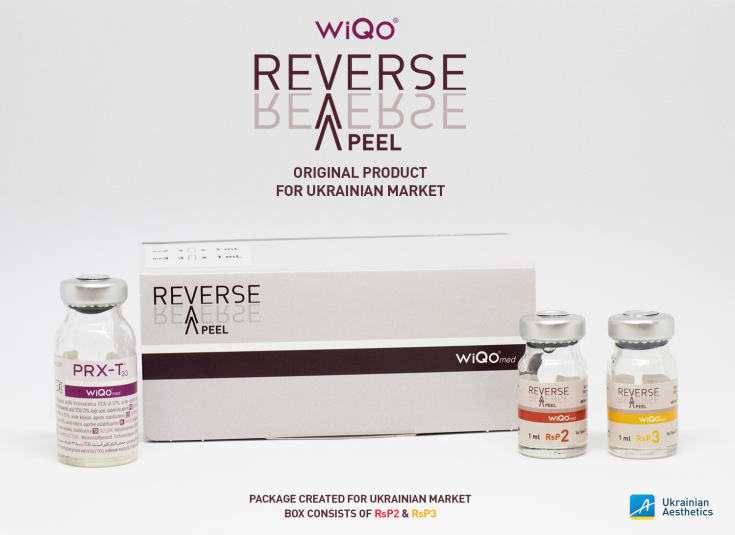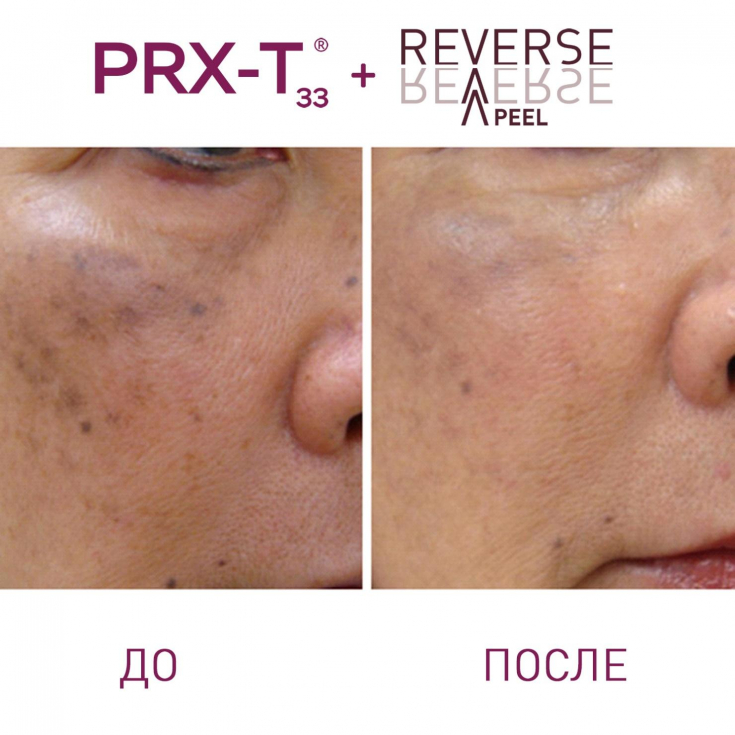Hyperpigmentation is caused by excessive synthesis of melanin − a pigment that gives our skin, hair and eyes their natural color in certain areas of the skin. This process can be caused by a number of factors, but the main ones are related to solar radiation, genetic and age factors, hormonal disorders and inflammatory reactions (acne). This requires a serious approach to the treatment of this condition from a specialist in aesthetic medicine, since it is quite difficult to obtain significant skin lightening.
Find out in the article on estet-portal.com about the mechanism of action of new generation drugs for the treatment of hyperpigmentation, the effectiveness of which has been proven by numerous clinical studies from a dermatologist, anti-age medicine specialist, member of the associations AAAM, IPS, IASCT (USA), UADV, EADV, IALMS, IPS, IHS, IACT (Europe), Medical Director of "Ukrainian Aesthetics" – Maria Sergeeva.
Sequence of the Reverse Peel Treatment for Hyperpigmentation Treatment
M.S.: First of all, the Reverse Peel procedure is unique in that it provides control of hyperpigmentation without the step of damaging the skin. There are three steps in the Reverse Peel procedure, the first of which is PRX-T®33.
Follow us on Instagram!
PRX-T®33 − this is a classic product that is already known to everyone, a hybrid molecule, where TCA is modulated by low concentration hydrogen peroxide, due to which the strongest stimulation of the dermis occurs without damage and inflammation, precisely due to the neutralizing effect of hydrogen peroxide. It also contains kojic acid, which is a very strong tyrosinase inhibitor − the main enzyme in the process of pigment formation. But at the same time, the drug has a very delicate effect on the skin.
Skin hyperpigmentation treatment: a multi-level approach for maximum results
One of the key ingredients of the second stage of the Reverse Peel procedure is 78% lactic acid. This is the highest concentration of lactic acid that is acceptable for use in cosmetology and dermatology, in terms of maintaining the stability of the skin. Accordingly, this acid is well tolerated and yet allows gentle, non-traumatic control of hyperpigmentation.

The third step of the Reverse Peel treatment is a combination of several ingredients, including salicylic, mandelic and phytic acids. As a result, we get a comprehensive three-stage approach to the treatment of hyperpigmentation without damage, the most powerful stimulation of the dermis and epidermis.
The result is a complex skin renewal with control of pigment formation, which is very important, for example, in melasma, when we must not allow any damage.
Indications, contraindications, complications of the Reverse Peel procedure in the treatment of hyperpigmentation
M.S.: Home care after the procedure includes a serum that contains tranexamic acid and lactoferrin. The active components of the serum, as well as the combination of acids and the level of their exposure in the composition of the preparation PRX-T®33 (officially presented by Ukrainian Aesthetics ) with Reverse Peel therapy sessions allow you to control the process of hyperpigmentation from the very formation of the pigment, ending directly with the transfer of melanosomes in melanocytes. That is, all stages of melanosis are taken into account and there is a blockage of pigment synthesis at each of the stages. This product provides permanent control of hypermelanosis, since this process cannot be cured, it must be constantly monitored.
Basic rules for preparing the skin for a medium peel
Indications for the Reverse Peel procedure: photo- and chronological damage to the skin, in the form of hyperkeratosis, telangiectasia, dyschromia, as well as atrophic scars, stretch marks, increased lifting of the skin of the neck, body, hands.
Contraindications to the procedure: hyperreactive skin, seborrheic dermatitis, any dermatoses in the damaged area, maceration, herpes infection, pregnancy and lactation.

Complications: during the Reverse Peel procedure in the seborrheic zone, due to the deep penetration of the drug, a frost effect is possible and, as a result, the formation of crusts, while the skin regenerates in 5 days. Therefore, it is important to carry out the procedure layer by layer with less preparation.
Scientific-practical conference "PRX-T33BOOM!"
Approaches to the treatment of hyperpigmentation depending on the mechanism of its formation
MS: If we are talking about post-acne hyperpigmentation, in this case we are also dealing with scars that are atrophic, that is, "minus tissue". In this case, PRX-T®33 is a unique product that stimulates scar bottom lift unlike any other product on the market. In this situation, the Reverse Peel procedure will be very effective, since post-acne – this is hyperpigmentation that has been formed for a short time and will require few treatments.
Microneedling: new opportunities and advantages of the innovative mesoscooter
In the case of aging skin, we see melasma, solar lentigo, and then the approach to hyperpigmentation therapy depends on the level at which the pigment lies: if these are epidermal areas, then clearly defined edges will be visible, and accordingly, with epidermal hyperpigmentation much easier to work. We carry out the procedure once every 10 days until the desired lightening effect is achieved, in parallel, skin regeneration and a decrease in the amount of pigment occur. Post-procedure care is also very important, which controls skin renewal without increased melanosis.

If the pigment is deeper, and it is dermal hyperpigmentation, it appears as gray-blue spots with an indistinct contour and we need more treatments. At the same time, aging skin will receive an additional stimulating effect from PRX-T®33: improvement of skin turgor and lifting effect.
Therapy for hyperpigmentation of intimate areas
M.S.: Conducting clarification of intimate areas – a rather dangerous procedure if the protocol is violated. PRX-T®Lady is actually a very gentle preparation for lightening intimate areas, because it has a much higher pH than PRX-T®33. This will be relevant not only in the fight against hyperpigmentation, but also in stimulating tissue elasticity in these areas, since the intimate areas are very prone to tissue stretching, to a decrease in tone, especially in the postpartum period. Indications for the procedure with PRX-T®Lady: decreased sensitivity, postpartum hyperpigmentation or pigmentation from mechanical impact, especially in patients with Fitzpatrick phototype 3, 4 and above.
Non-injection mesotherapy: innovative hardware technology
With PRX-T®Lady, you can achieve a return of skin tone, as well as an increase in sensitivity, which is noted by many patients after the procedure.
Possibilities of cryolipolysis in the fight against local fat deposits







Add a comment